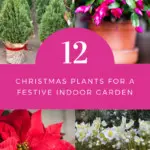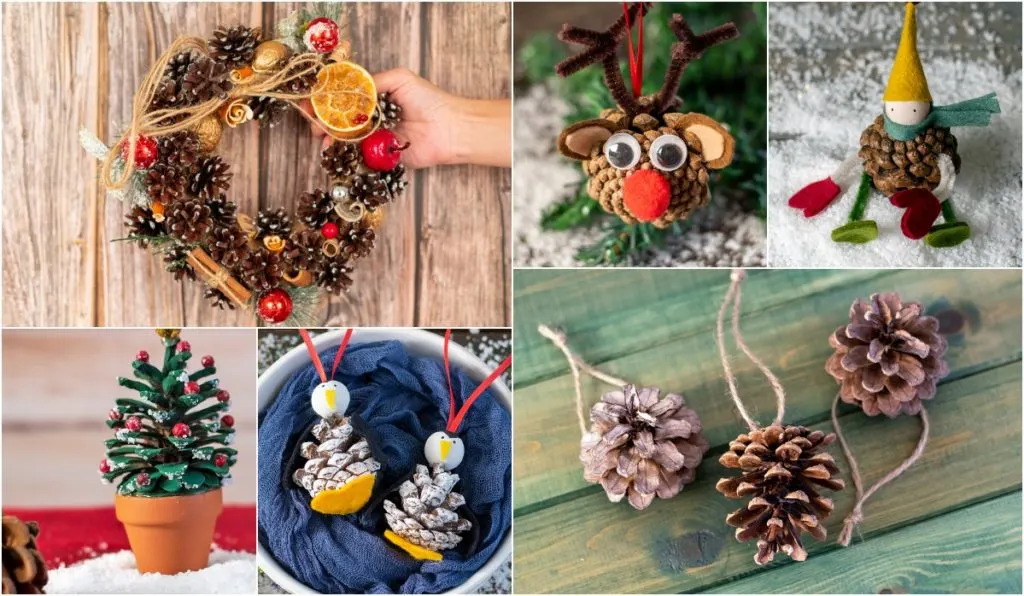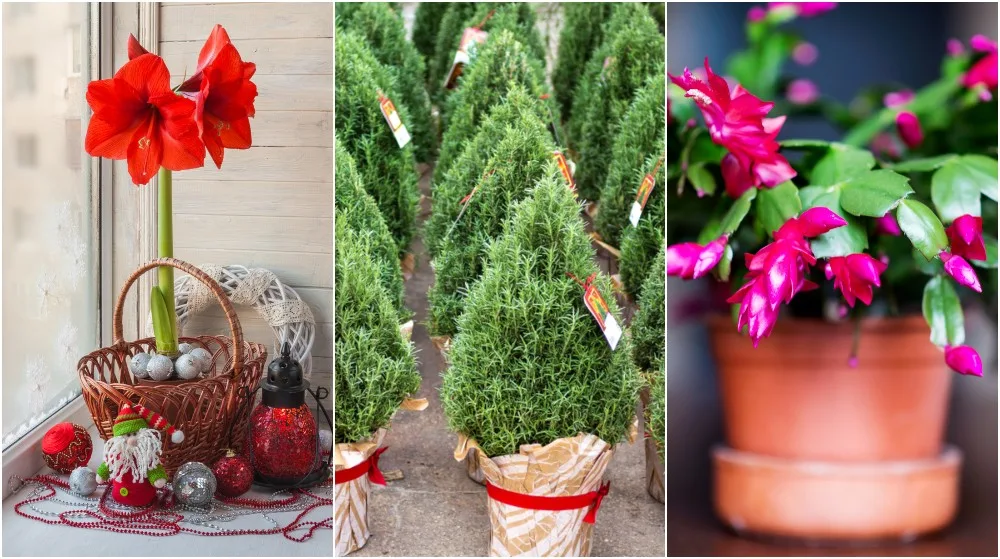
As the weather gets colder and the holidays draw near, many of us begin to transform our homes into festive, cheerful spaces. We drag out boxes of decorations, put on Christmas carols or our favorite Christmas movie, and deck the halls.
The colors of red, gold, silver, and green appear. Baubles and lights, and greenery are hung throughout to welcome in the season. For many people, decorating for the holidays includes adding plants that go part and parcel with the Christmas season.
I’ll bet you can name at least five plants that always show up around the holidays without thinking too hard. But did you ever wonder how these traditional plants came to be associated with Christmas and the winter holidays? Most of us don’t even give it a second thought.
Let’s look at some of the most popular traditional Christmas plants we use to decorate our homes.
Like all house plants, these beautiful Christmas plants add an extra feeling of warmth and life in the home, something we can all appreciate when the nights are long and dark.
When you’re picking up one of these lovely living decorations for yourselves, consider giving a plant as a Christmas gift.
1. Poinsettia
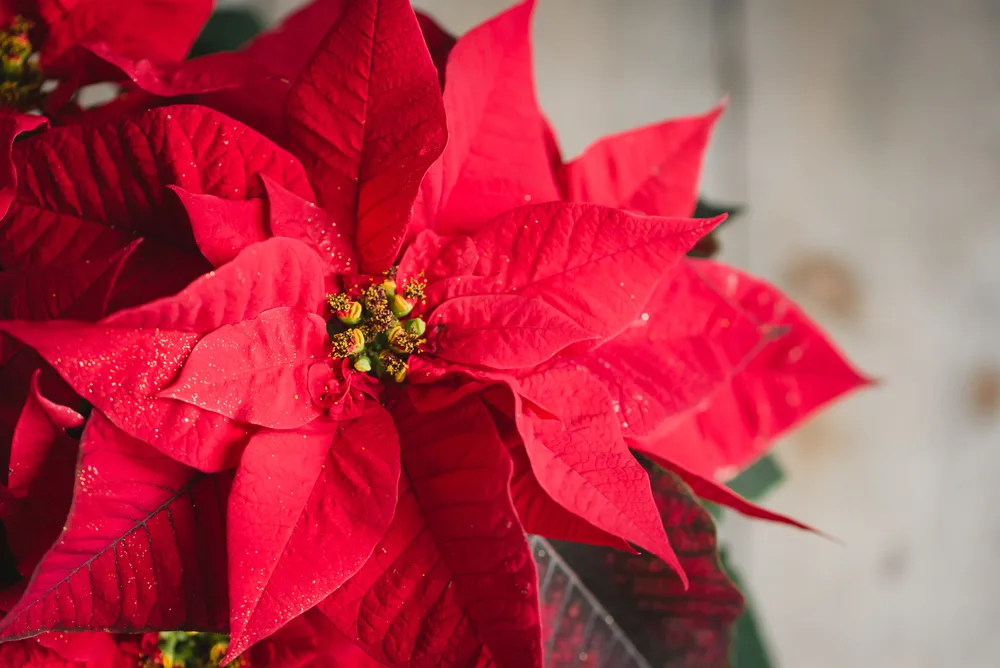
Aside from the Christmas tree, this might be the most popular Christmas plant around. The beautiful red flowers and striking green leaves certainly lend themselves to the holiday.
Poinsettia are native to Mexico, where the Aztecs used them to make medicine and dye, among other things.
The first US ambassador to Mexico, Joel Robert Poinsett, brought these plants back with him and sent them to friends and botanical gardens where their popularity bloomed. (Oh, come on, I had to sneak in one pun.)
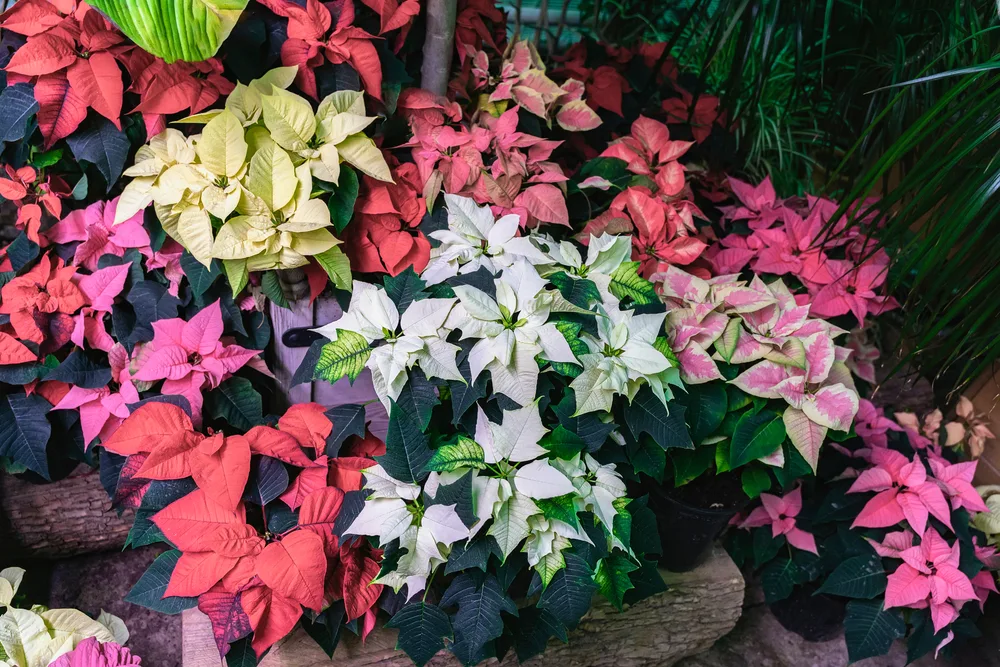
The poinsettia we buy today look nothing like the original cultivar brought back from Mexico. Poinsettia have been cultivated over the years to produce the large, showy blooms we all know and love. And these days you can get many different colored poinsettias – pink, cream, burgundy, even blue. The list seems to grow each year.
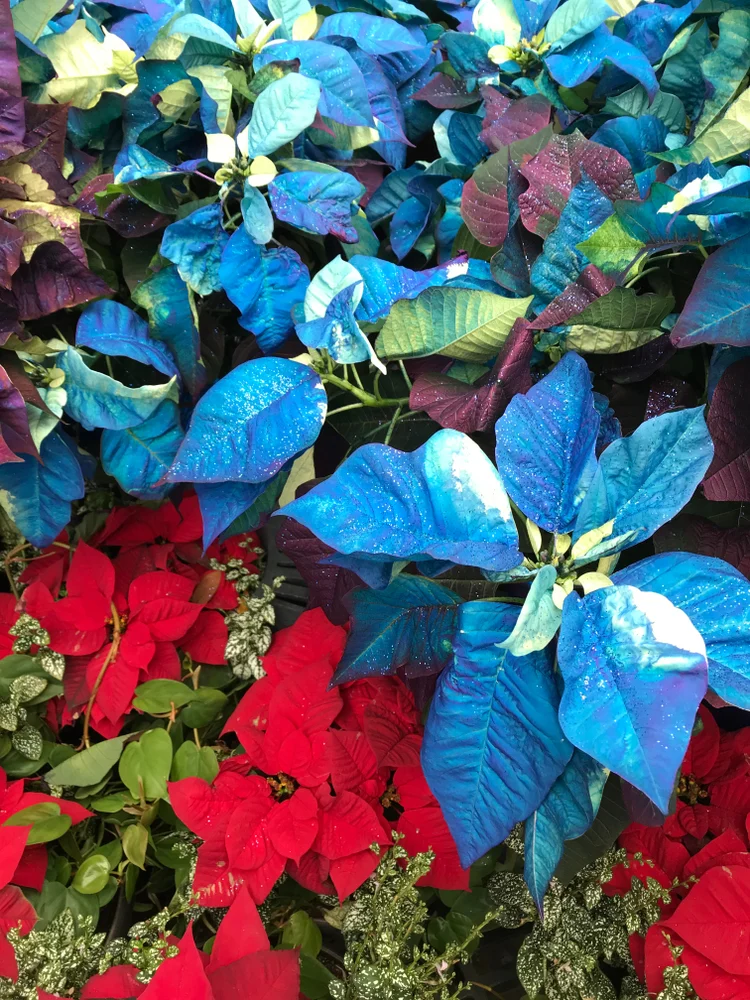
Did you know you can keep the poinsettia as a house plant and encourage it to bloom again next season? Depending on where you live, you can even grow them outdoors.
But how did they become linked with Christmas?
There’s an old Mexican story that a little girl named Pepita was on her way to the chapel on Christmas Eve. As she had no gift for the Christ child, she picked weeds along the road. Her humble offering was placed at the altar and bloomed into the beautiful poinsettia.
Related Reading: 22 Things Everyone With A Poinsettia Needs To Know
2. Holly and Ivy
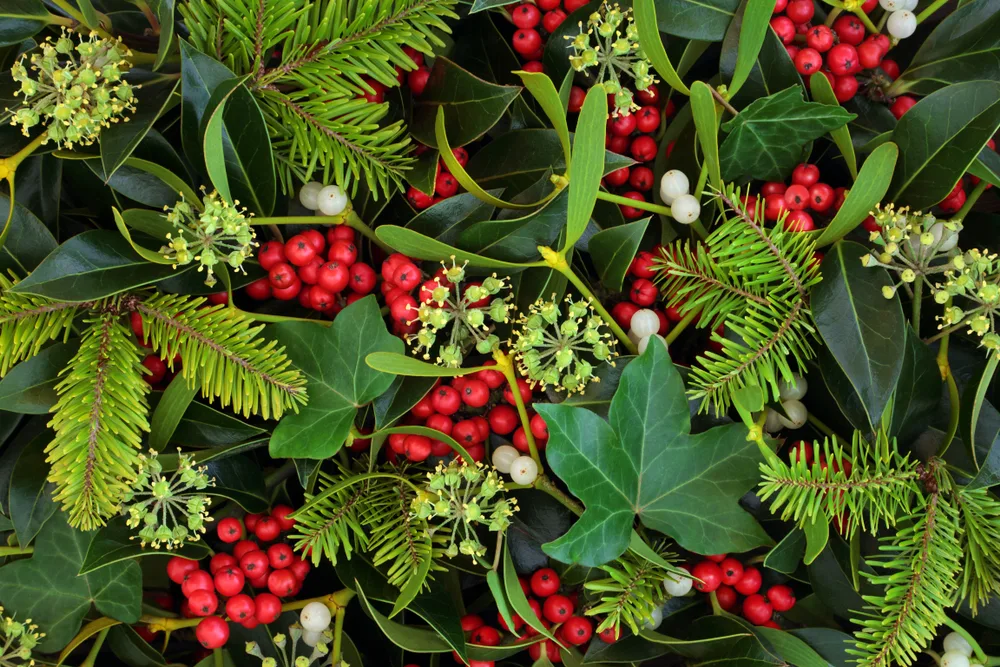
Grab your holly wreath, and let’s celebrate; happy Saturnalia! This ancient Roman festival dedicated to the god Saturn bears a striking resemblance to Christmas. Celebrated around the same time of year, many Saturnalian traditions were adopted by Christians and are still celebrated in some form today.
Holly was often used to make wreaths to honor Saturn during Saturnalia. These wreaths were often given to neighbors and friends.
Holly and ivy were also important plants to the pagans who brought these evergreens into their homes during the darkest times of the year. The evergreens symbolized life, hope, and the renewal of spring to come. Holly was viewed as the masculine and ivy the feminine.
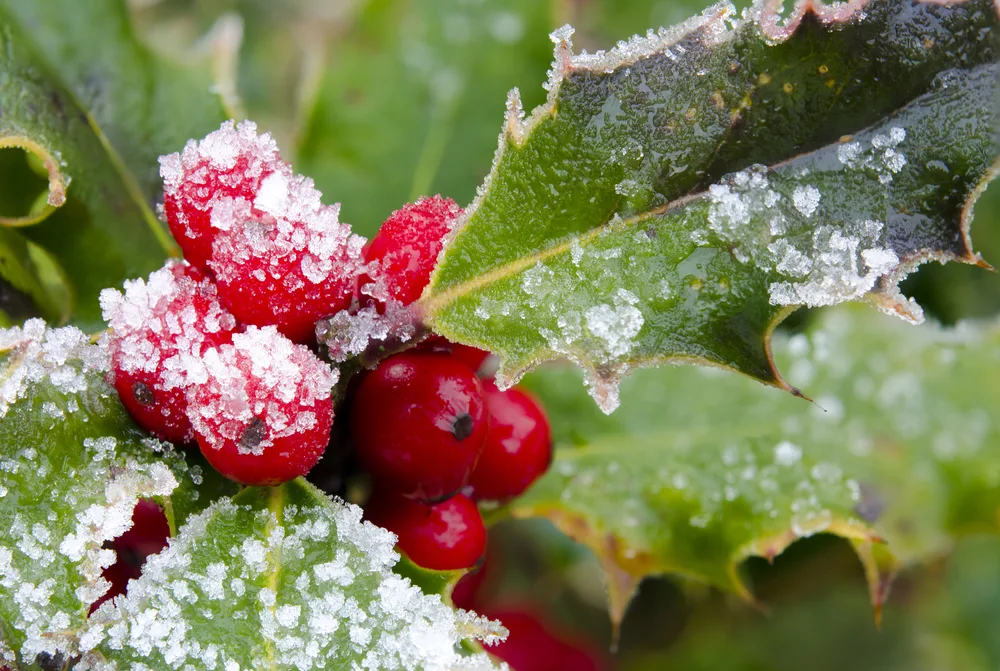
When Christianity came about, many of Saturnalia and Paganism’s traditions were adapted to celebrate Christmas, with their significance given a Christian spin. A holly wreath resembled the thorn of crowns placed on Christ’s head during his crucifixion, and the red berries, the blood of Christ, and finally his resurrection signifying hope and eternal life.
And while most folks don’t bring a whole holly bush into their homes, many have planted these festive evergreens in their yards. Holly can stay compact as a shrub or grow into large trees, providing you with plenty of holly to deck the halls with for years to come. However, a potted English ivy would make a lovely gift, and you can definitely bring it inside.
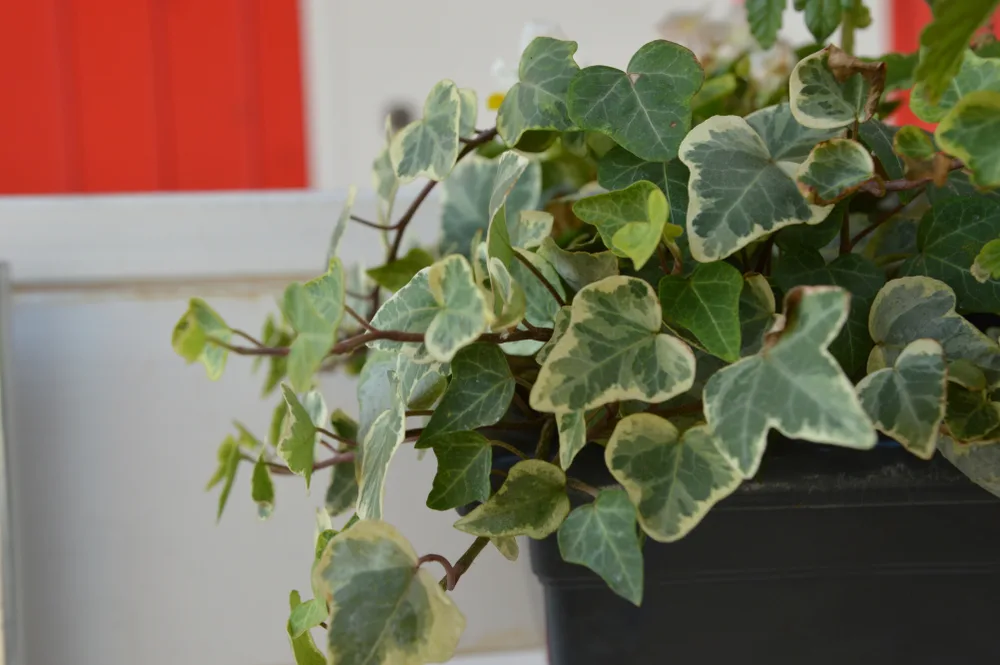
3. Mistletoe
Ah, mistletoe. Love it or hate it, this plant is synonymous with Christmas. Mistletoe is a semi-parasitic plant found growing off of other trees. And year after year, we pick mistletoe to hang in our doorways at Christmas time.
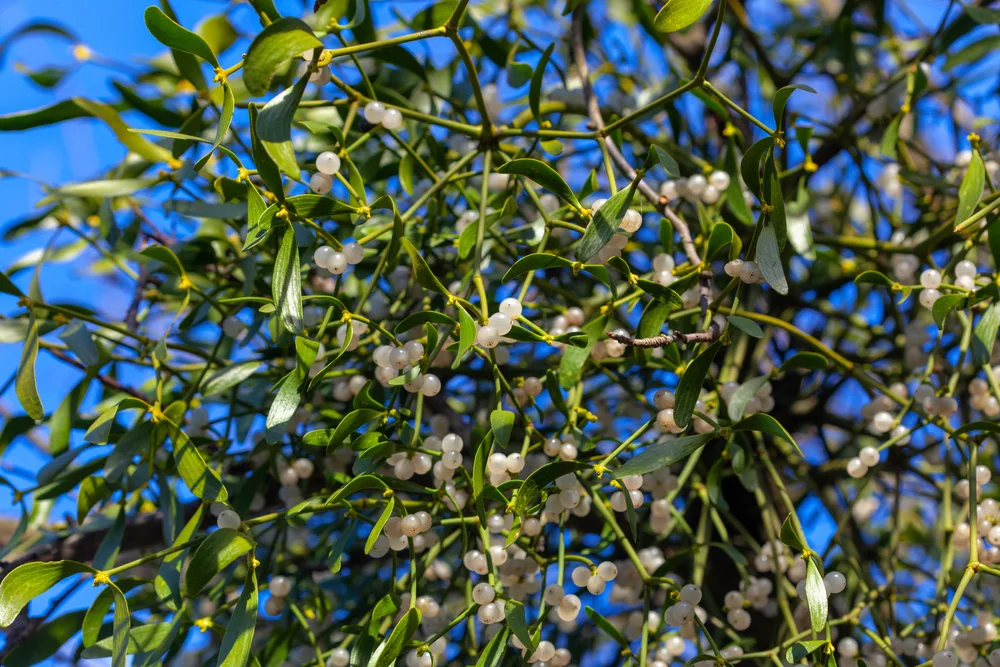
But where did this tradition come from?
It appears that the Celtic druids were the first folks to use mistletoe, as they believed it to be a sacred plant.
When it comes to kissing, however, there seem to be two competing theories. One theory is that kissing under the mistletoe comes from the previously discussed festival of Saturnalia. The Romans often used mistletoe as offerings in temples to their gods, and it’s said that mistletoe signified peace.
The other theory comes from a Nordic tale. The story goes that Frigga, the Norse goddess of love, revived her son under a mistletoe plant after Loki shot him. Frigga declared mistletoe to be sacred and said that anyone standing under it deserved protection and a kiss.
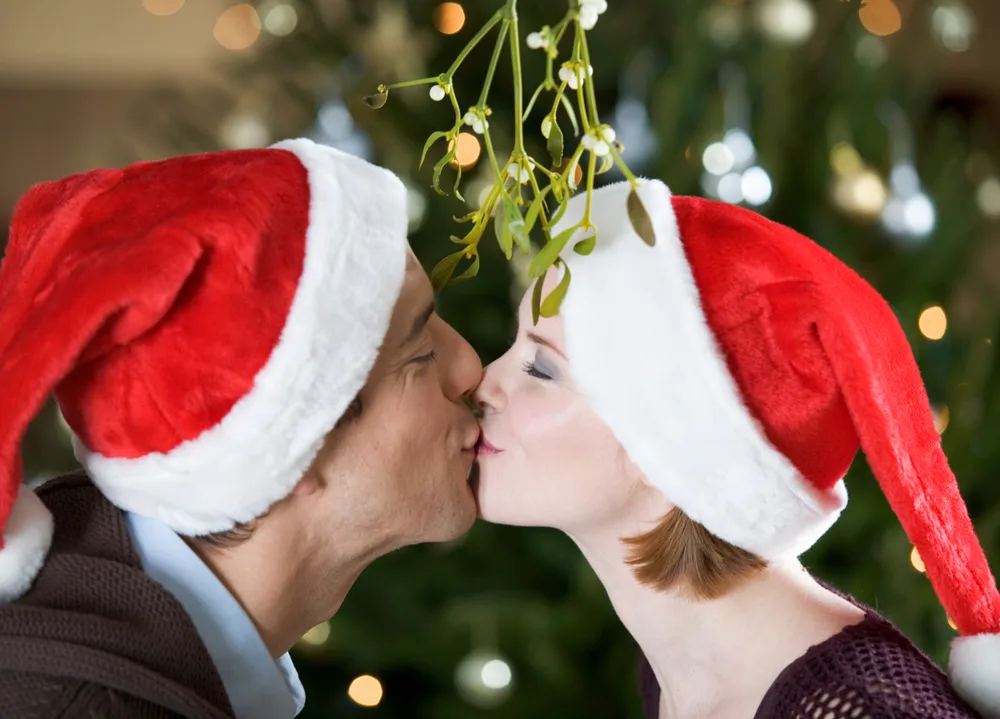
These days mistletoe seems to be falling out of favor. Perhaps in modern times, folks are looking for Frigga’s protection in not being kissed when standing under the mistletoe.
4. Christmas Rose
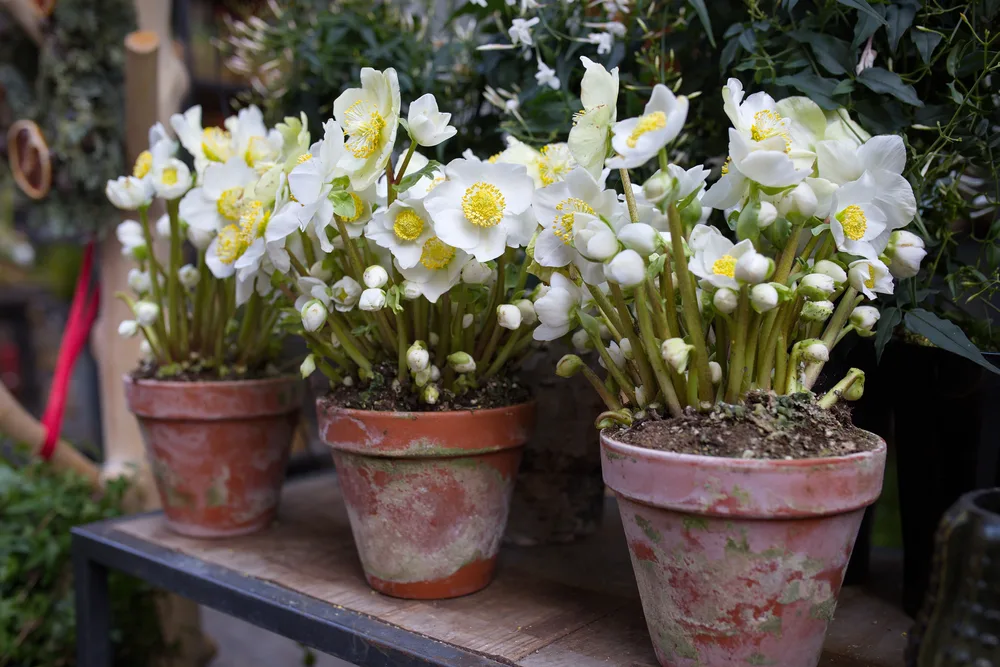
The beautiful white Helleborus niger is yet another flower whose legend belongs to a young girl with no gift for the Christ child. Only this time, the little one was so upset she began to cry. Her tears fell into the snow, and lo and behold, this beautiful flower sprouted on the spot, giving her a gift worthy of the new babe.
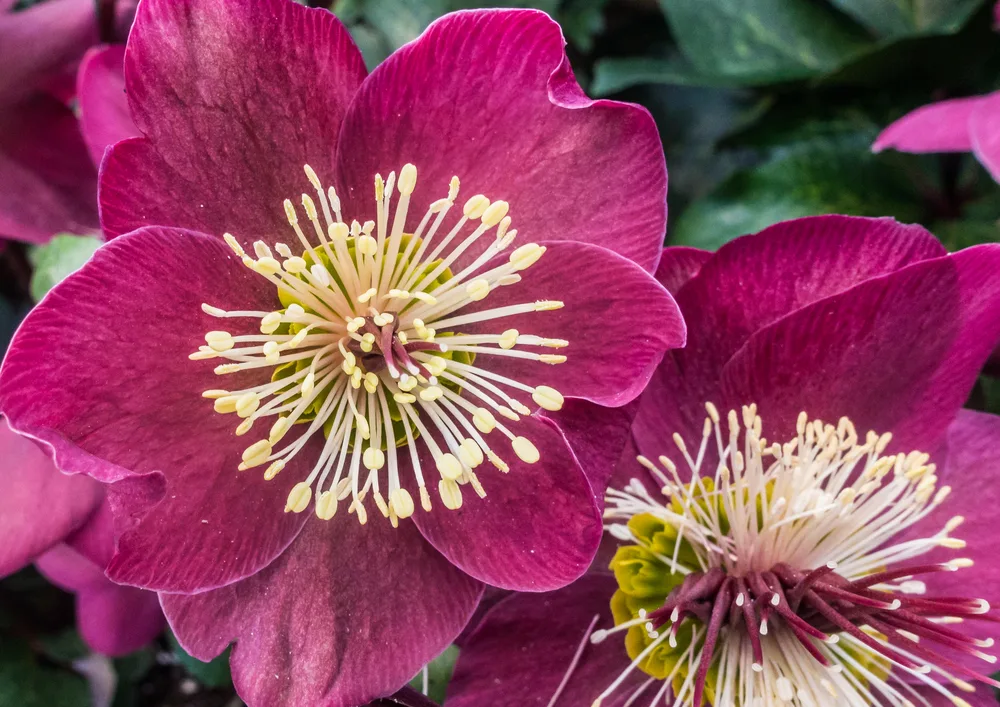
Despite its name, the hellebore isn’t a true rose. While the white hellebore is known as the Christmas Rose, they come in many other lovely colors. Depending on where you live, the Christmas rose may even bloom in December. For the rest of us, we’ll have to content ourselves with growing it indoors. No tears are necessary.
Christmas Blooms
Some plants aren’t connected with any specific Christmas tradition. They show up year after year, simply because their blooms coincide with the season. This doesn’t make them any less special; in fact, in many homes, growing these blooms annually is a family tradition in and of itself. If you’ve never tried to force paperwhites or enjoyed the gorgeous heart-shaped leaves of cyclamen, I highly encourage you to give it a try this year.
5. Christmas Cactus
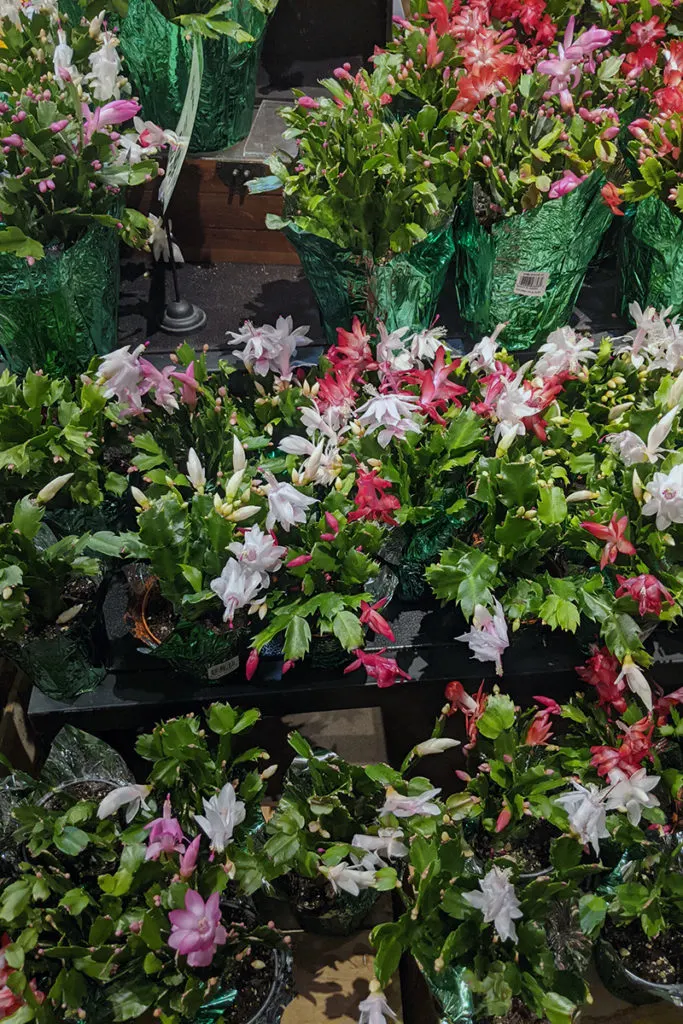
You’d be hard-pressed to walk into a garden center or even a local grocer this time of year and not see a large display of Christmas cactus or Schlumbergera.
These hardy little succulents make great gifts. And it seems that everyone has that one relative who has one that’s as big as a VW Beetle that blooms without fail year after year.
Their connection with Christmas comes from the plant’s propensity to gift us with showy blooms at Christmas time.
So, it may surprise you to find out that what you see in the store this time of year is not, in fact, a true Christmas cactus.
No one wants to buy a plant that’s known for its pretty blooms if it doesn’t have any of those pretty blooms. As the Christmas shopping season came earlier and earlier, nurseries started pushing the Thanksgiving cactus because they would come to the market loaded with blooms. Unfortunately, by the time Christmas rolled around, the schlumbergera truncata has finished blooming for the year.
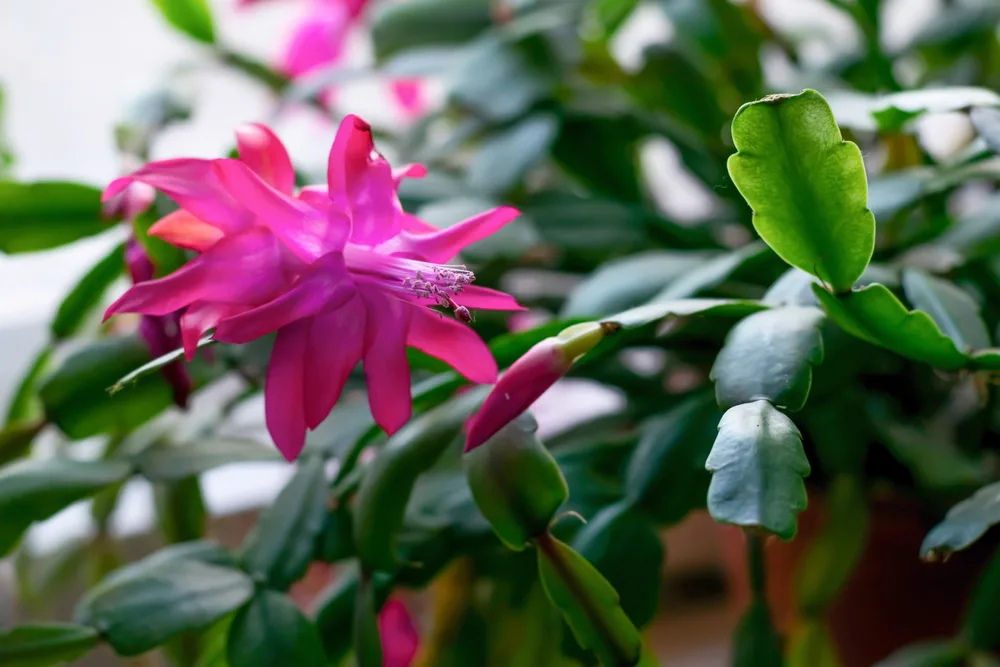
The schlumbergera family of cactus, or more generally, the holiday cactus, are all nicknamed for the time of year when they bloom. Check out my detailed post about the care and identification of the different holiday cacti to determine which one you have. And if yours hasn’t bloomed since you brought it home, I’ll fill you in on how to get it to bloom again.
No matter which holiday they bloom, Schlumbergera are still some of my favorite house plants because of how easy they are to care for.
Related Reading: 10 Things Every Christmas Cactus Owner Needs To Know
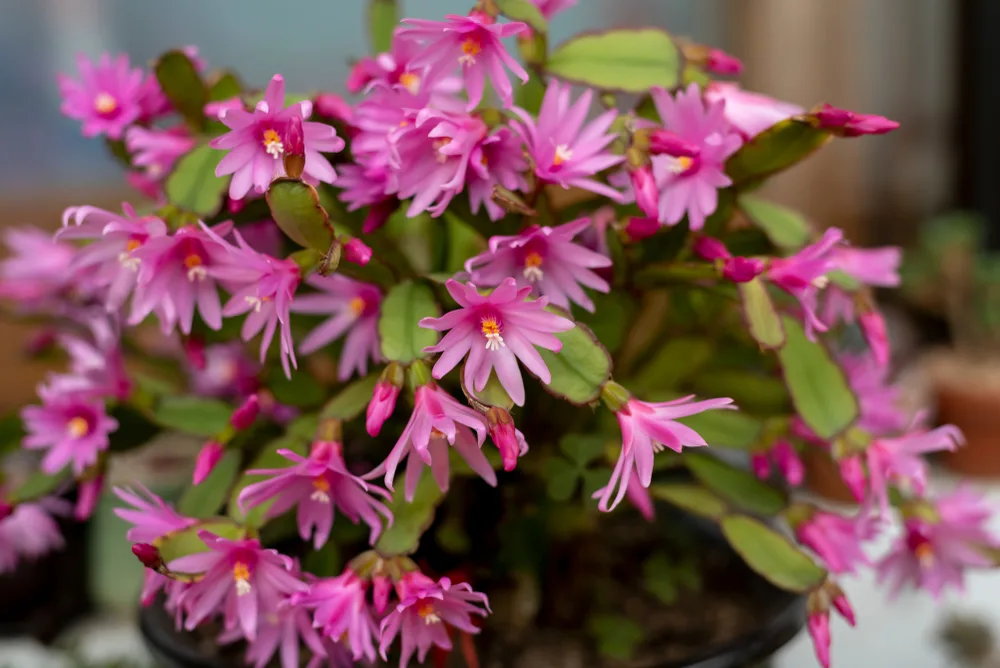
6. Amaryllis
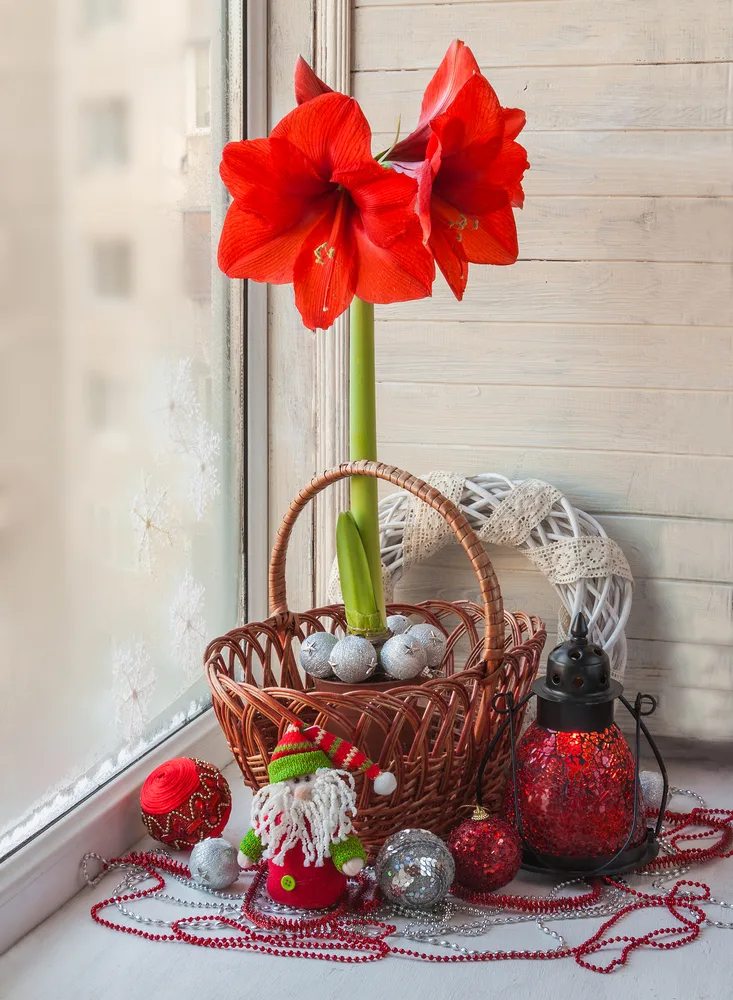
When I was in 3rd grade, my absolute best friend in the entire world was a 92-year-old woman. I was a bit of an awkward kid. (Yeah, I know not much has changed.) Every year, Candace would grow an amaryllis bulb for Christmas. She would start the bulb out in early November, and by the time Christmas rolled around, she would have this giant red bloom that looked like the bell of an old phonograph.
I can’t see these beautiful harbingers of Christmas without thinking fondly of my friend. And isn’t that what Christmas is all about?
These lovely tropical bulbs come in your traditional red and white, but there are also burgundy and peach, and pink varieties, as well as variegated blooms. You can even grow them without a container, using a waxed amaryllis bulb.
Read Next: How to Save Your Amaryllis Bulb To Bloom Again Next Year
7. Paperwhites
Again, paperwhite narcissus is another bulb that can be forced to bloom in your home during the winter. These beautiful white flowers remind me of freshly fallen snow. And when winter is bleakest, their scent reminds me that spring is just around the corner.
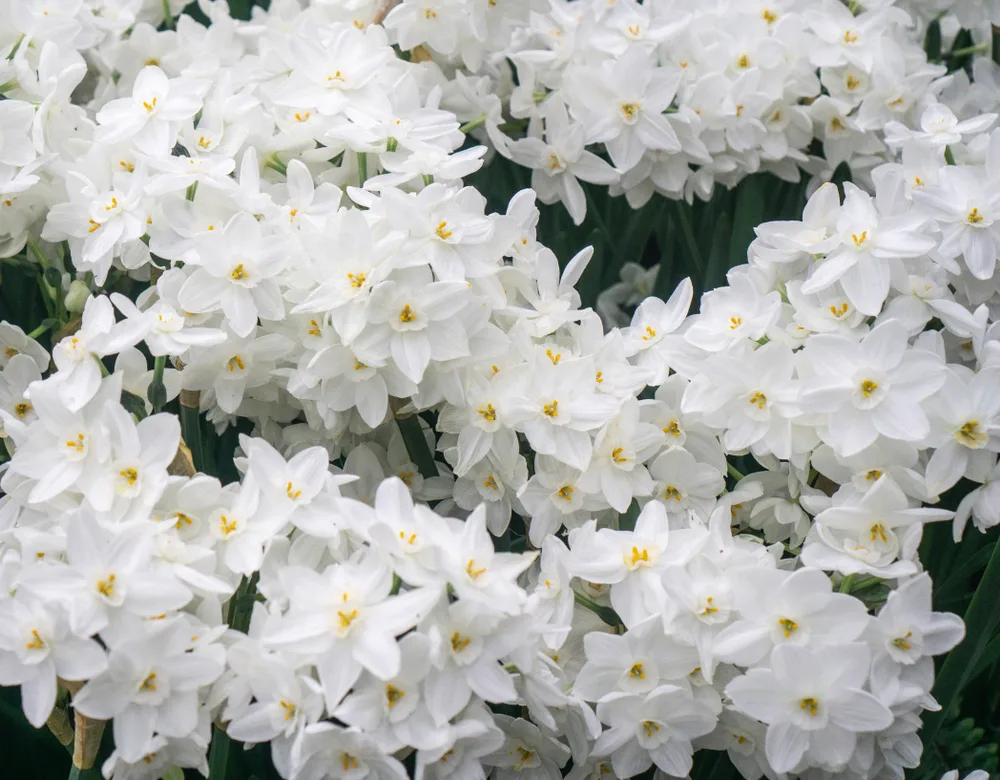
Forcing paperwhites is easy to do because, unlike many bulbs, they don’t have a dormant chilling period, so simply exposing them to water will get them growing. These pretty little flowers keep many gardeners from going through withdrawal this time of year.
And they can be cared for after Christmas to bloom again year after year. Here’s how to do that.
8. Cyclamen
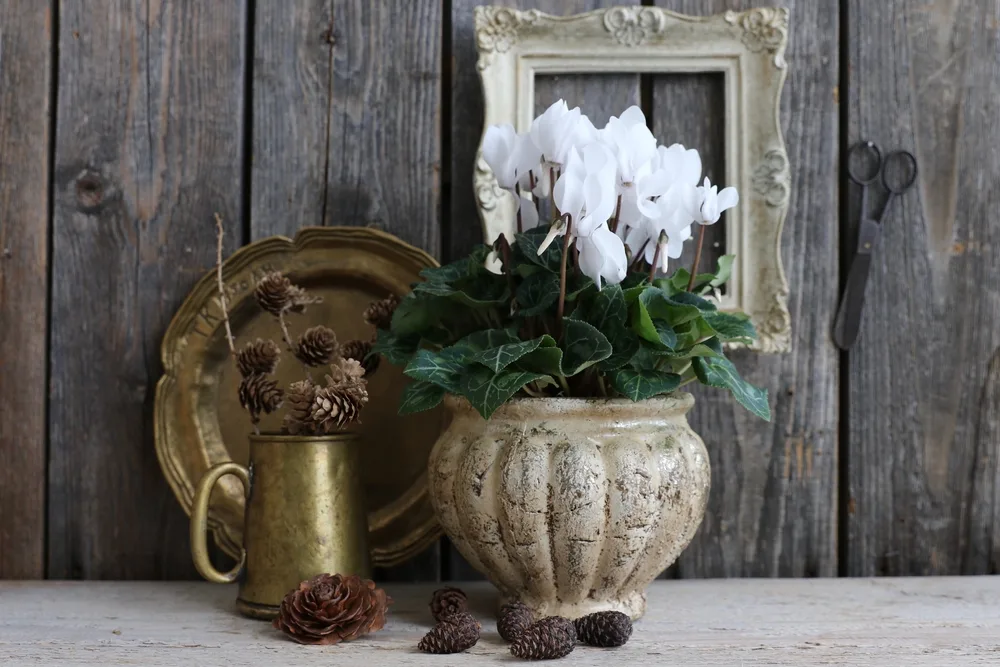
Cyclamen are another plant popularized because of it’s blooming near Christmas. These stunning little plants have taken a backseat thanks to the popularity of the poinsettia. But they are still one of my personal favorite Christmas plants.
These compact plants flourish in the winter and will bloom long after Christmas, often well until February. And you can easily keep them healthy as they go dormant during the hotter months so that they will bloom again next winter. (See? Kind of like me!)
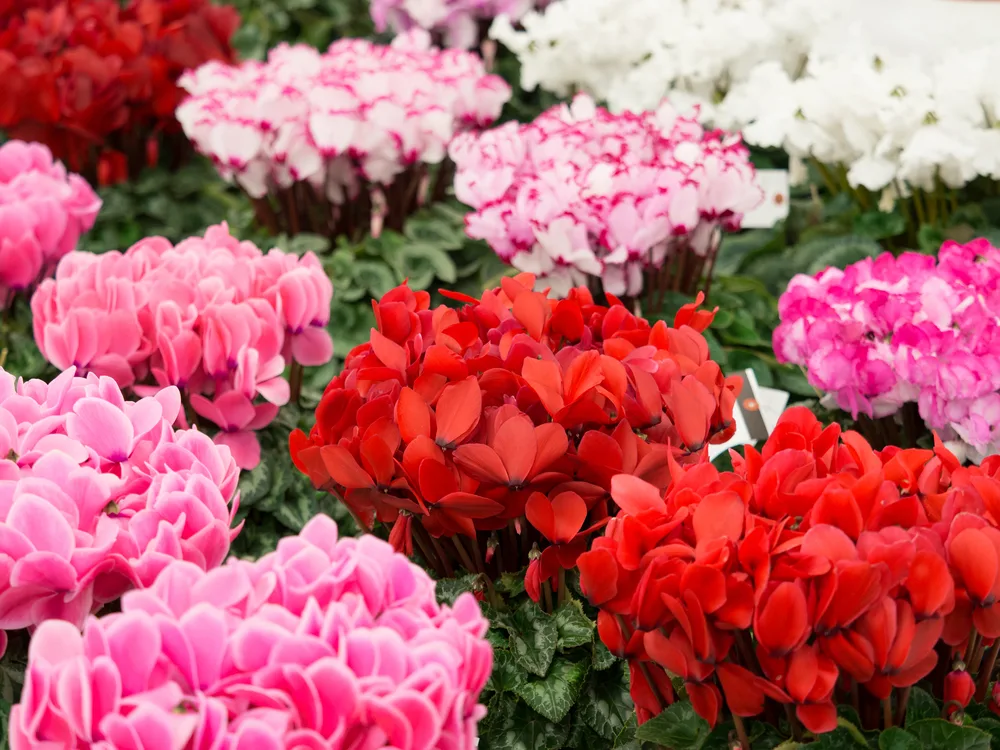
Not only are the flowers simply stunning, but their heart-shaped leaves are just as lovely. Red and white are common Christmas colors for cyclamen, but you can also find them in pink and purple.
And forget roses; cyclamen are known as the flower of deep, lasting love. They’re a tuber and a tough one at that. These plants can stand up to harsh conditions and still flower the next year again. If that isn’t love, I don’t know what is.
If you love giving a gift with meaning, give your long-lasting love a cyclamen this Christmas.
9. Kalanchoe
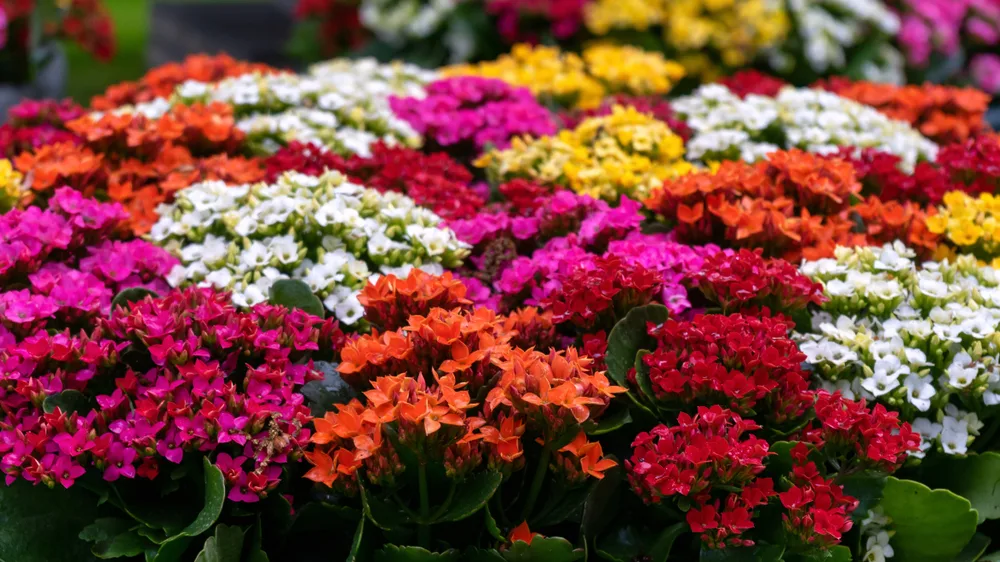
These pretty little succulents show up each year covered in blooms that are ready to burst open during the holidays. And boy, are they festive looking! Bright reds, oranges, yellows, and salmon-colored flowers are showcased against a background of shiny deep green leaves or green and white leaves. The flowers keep blooming for ages too.
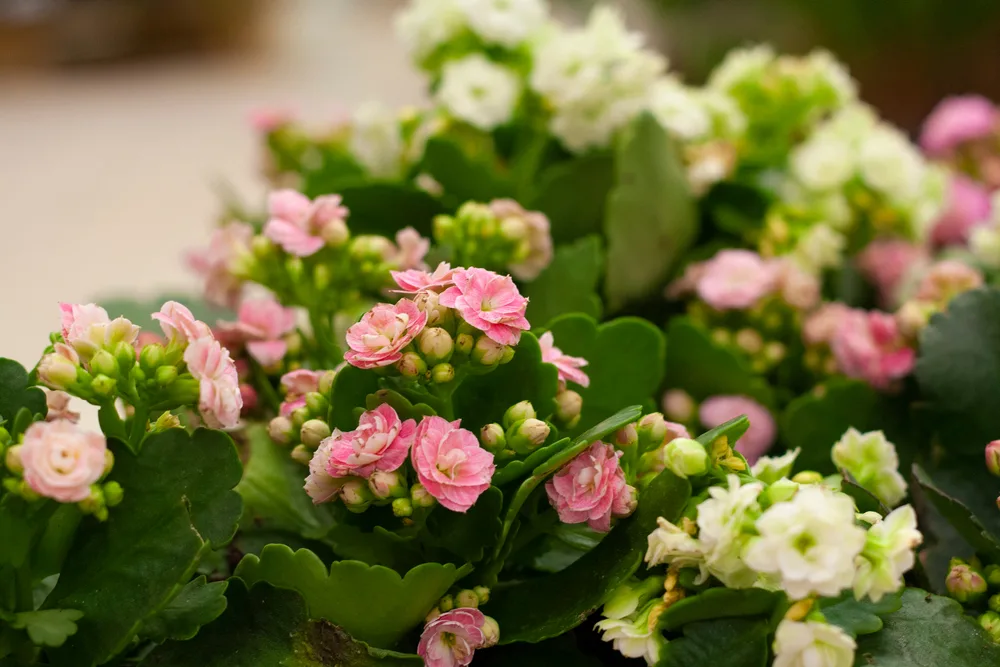
But when the flowers finally quit, most folks treat the Christmas Kalanchoe as a disposable plant, discarding it. Getting them to bloom again isn’t easy, but it can be done. You don’t have to throw them away though, even if they don’t bloom, their shiny leaves make them an attractive house plant.
If you’re a gardener who loves a challenge, why not keep your kalanchoe and see if you can get it to bloom again next year.
The Christmas Tree
Then, of course, we have that most obvious Christmas plant – the Christmas tree. While many opt to bring a full-sized tree into their homes each year, some folks opt for something a little smaller. And to that end, here are three classic choices.
10. Norfolk Island Pine
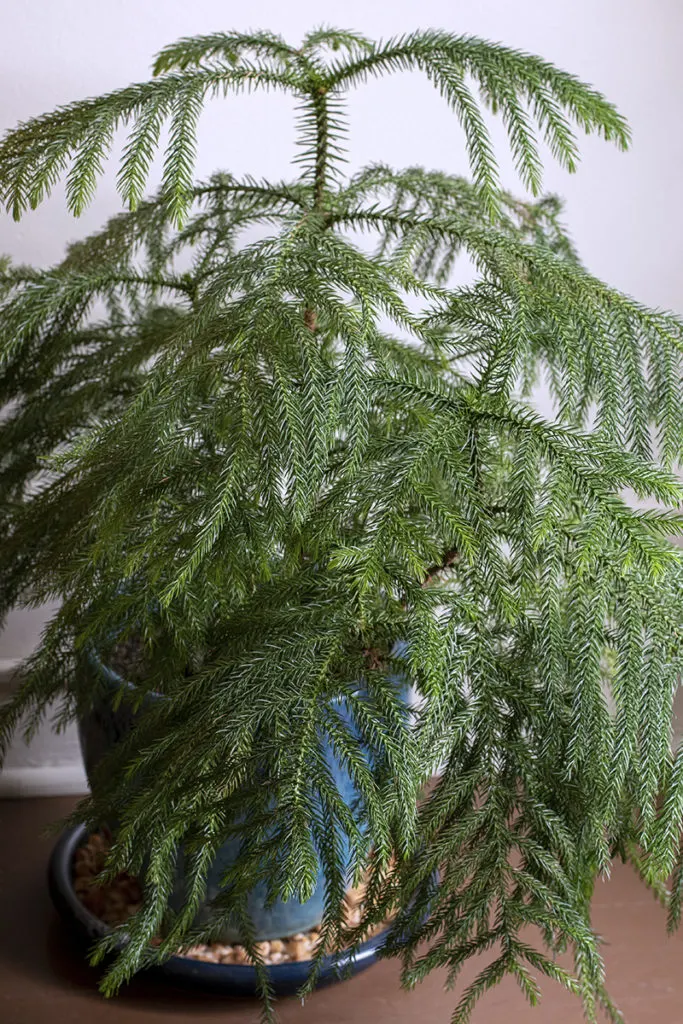
The Norfolk Island pine is another plant that pops up in the shops this time each year. While it has no grand Christmas tradition dating back hundreds of years, it seems to have worked its way into the Christmas season as the perfect living Christmas tree option.
Some of them have been sprayed with gold glitter to make them more festive. Many come adorned with tiny ornaments. But more often than not, they are in their natural state, ready to come home with you.
These wee pine trees make a great option for those who want a Christmas tree without all the fuss of cleaning up dead needles. Norfolk Island pines also make a great tabletop tree for apartment dwellers and folks who don’t have room for something bigger.
And the best part is once the holidays are over, you’ve got a lovely evergreen to brighten your space and clean the air for you. Norfolk Island pines are easy to care for and are a great gift idea for the plant lover on your list.
These trees originated on Norfolk Island, naturally. And they aren’t pine trees at all, but rather an evergreen from the Araucariaceae family. These guys have been around since prehistoric times. If you’ve got a dinosaur lover in your life, they might enjoy a prehistoric Christmas tree.
11. Dwarf Evergreens
If you want a Christmas tree, but you don’t have a lot of room, it seems the agriculture industry has you covered. There are many dwarf evergreens available these days, from the tiniest 8″ dwarf scotch pine to a tabletop dwarf blue spruce.
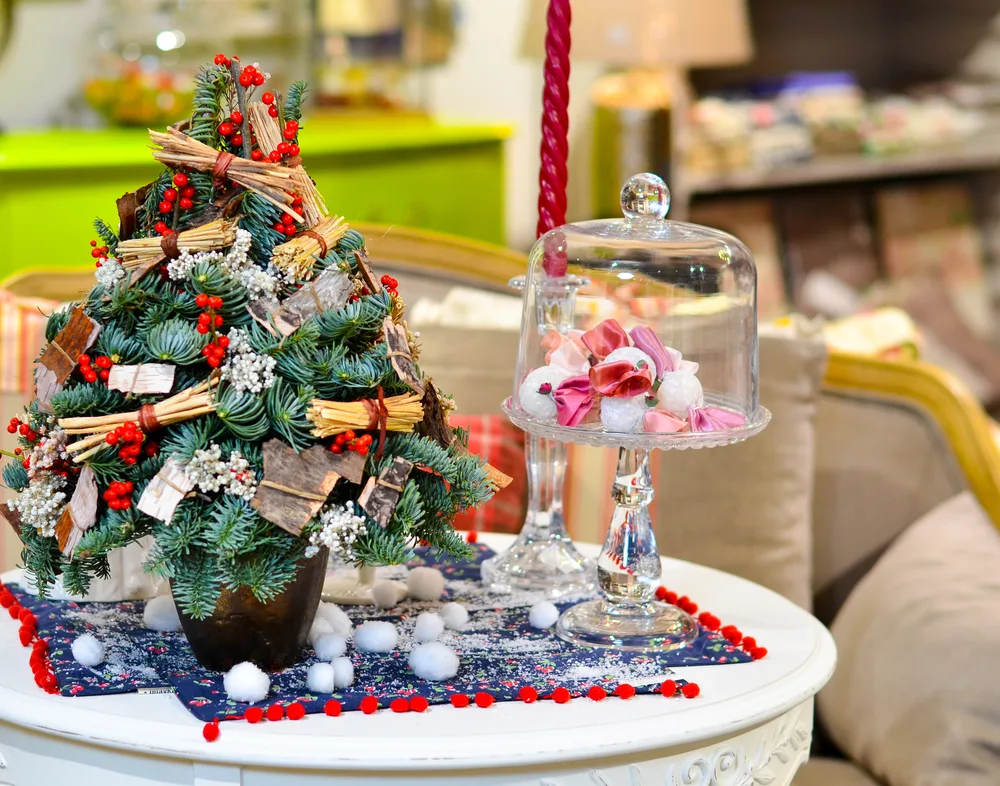
You can find them everywhere, too, at the grocery store and the garden center, and even at the florists. Send these charming little trees to relatives far and wide. Decorated or undecorated, you can find a tabletop Christmas tree to suit your needs.
I tried to convince my mother one Christmas that my Barbie doll needed a real Christmas tree. These tiny little guys would have been perfect for her Dream House.
And like their larger cousins, having a Christmas tree in the home comes from a long-standing tradition that again finds its roots in the pagan tradition of bringing evergreens into the home during winter. (The early Christians weren’t very good at coming up with original ideas to celebrate their holiday.)
However, the Christmas tree we know and love today got its start in Germany. O Tannenbaum, indeed! It was popularized by Queen Victoria, who incorporated her German husband’s tradition into their own Christmas festivities.
12. Rosemary trees
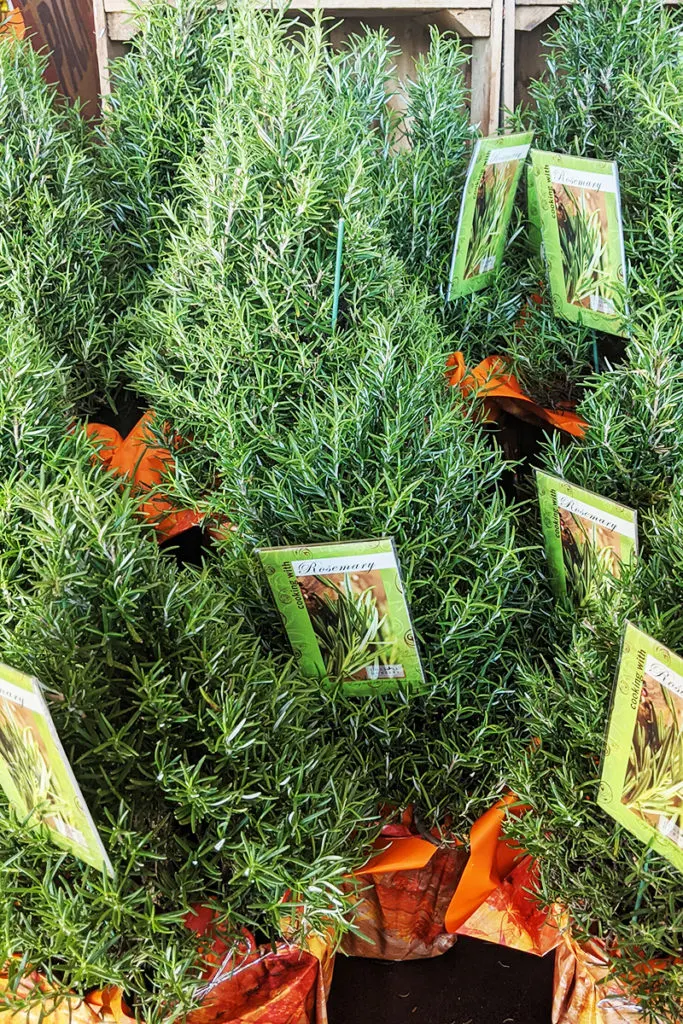
Yet another popular alternative to a full-sized Christmas tree is a rosemary bush. The Romans favored rosemary for warding off evil spirits. Maybe it will keep pesky relatives away during the holidays, who knows?
When it comes to Christmas, there are many stories linking rosemary with the Christ child’s mother, Mary. Some say she threw her cloak over the plant and its blooms turned blue ever after. Some tales say Mary draped the baby’s swaddling over the plant, and that is how rosemary got its distinctive smell.
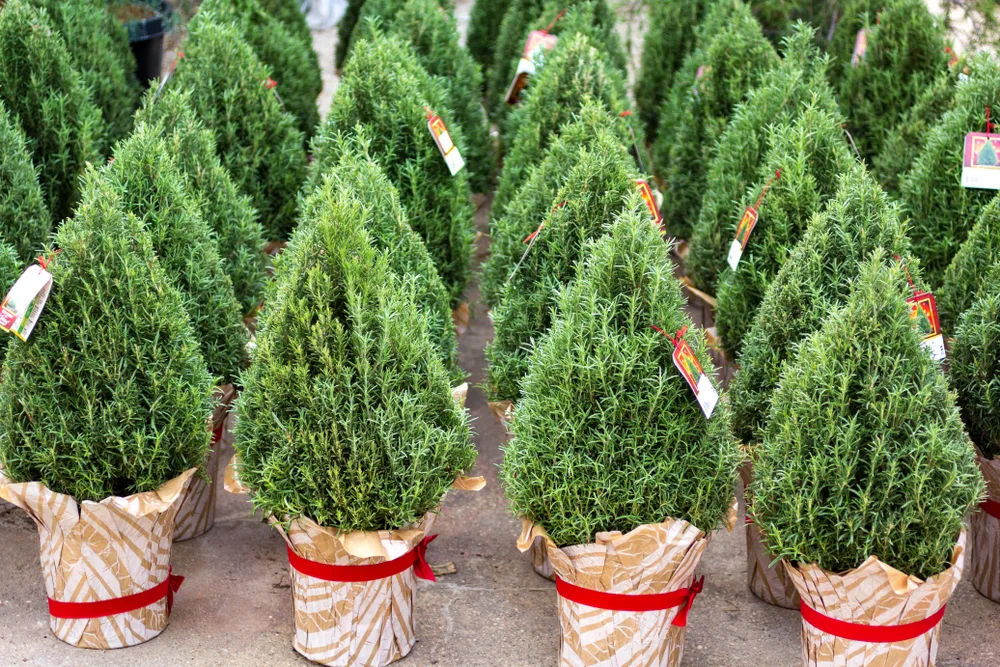
Rosemary has a long-standing tradition as an herb of remembrance, and what better symbol of sharing with loved ones during the Christmas season. The significance of rosemary as an important holiday plant seems to have dwindled over the years. Bring back this tradition with the gift of a rosemary tree this season.
Are any of these part of your Christmas?
What Christmas plants are a part of your annual festivities? Have any of these piqued your interest to add a new tradition to your celebrations?
Read Next:

Get the famous Rural Sprout newsletter delivered to your inbox.
Including Sunday musings from our editor, Tracey, as well as “What’s Up Wednesday” our roundup of what’s in season and new article updates and alerts.


